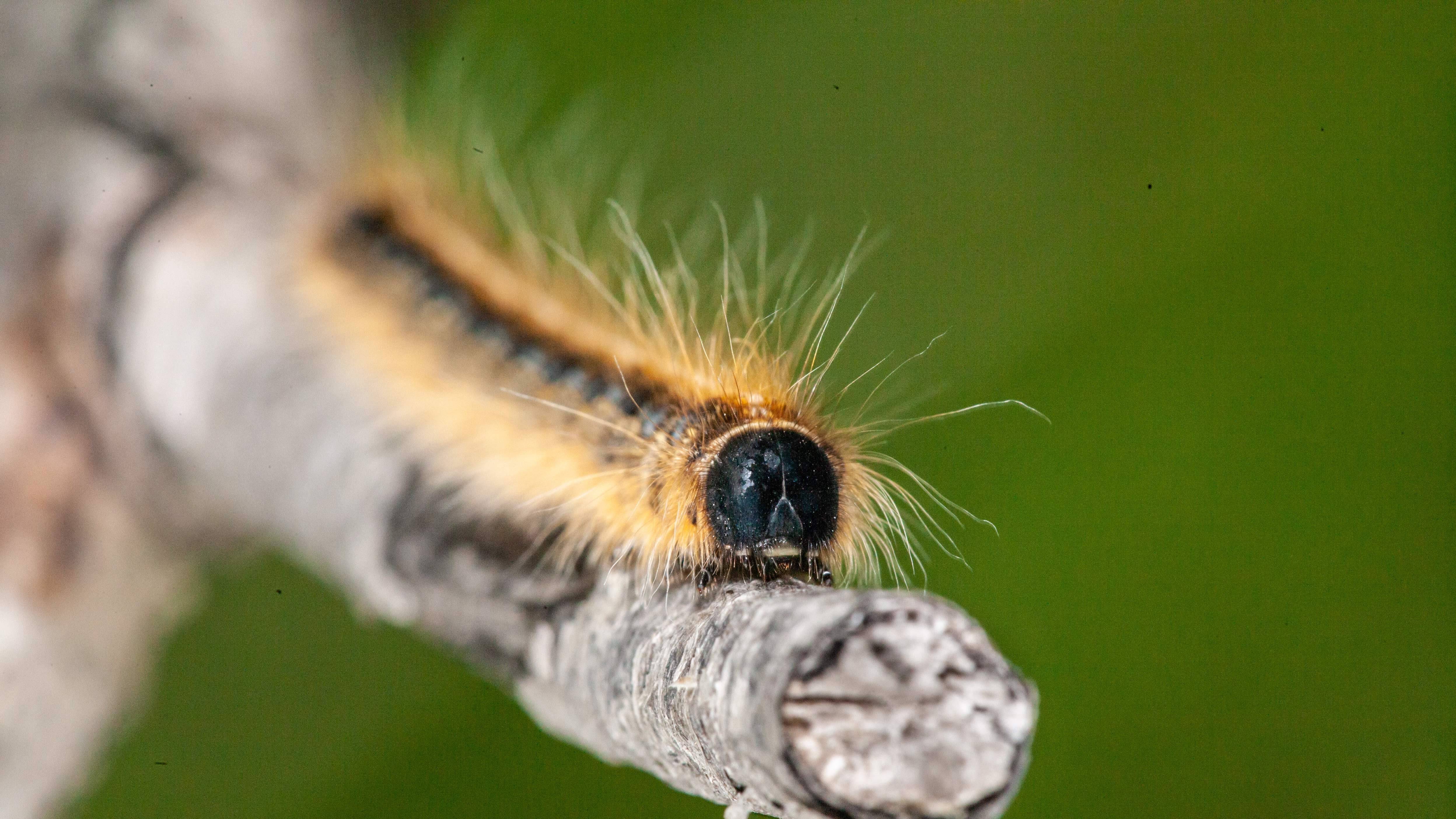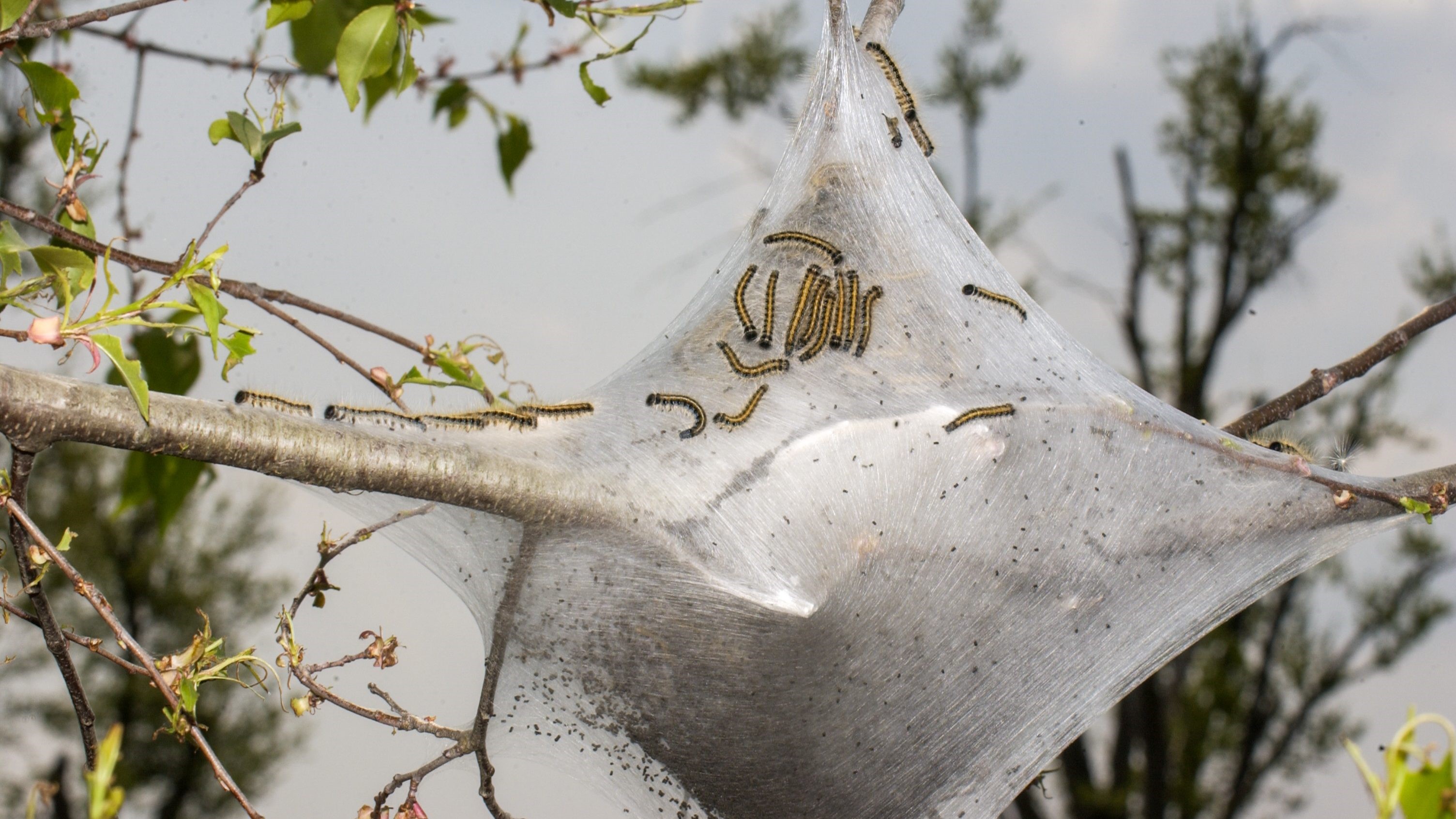Eastern Tent Caterpillars make their 2024 Kentucky debut
Eastern Tent Caterpillars make their 2024 Kentucky debut


The season's first Eastern Tent Caterpillars (ETC) are now emerging. Initial sightings have been reported in Western Kentucky counties after having spent the last nine months as masses of eggs on twigs of wild cherry and related trees. The normal time for the egg to hatch is when the forsythia bloom starts.
The insect is infamous for its connection with the Mare Reproductive Loss Syndrome (MRLS) in the early 2000s when an estimated 3,500 foals were either aborted, stillborn or died shortly after birth. During 2001, Central Kentucky lost an estimated 30% of the 2001-2002 Thoroughbred foal crop. Overall, the state suffered an economic cost of approximately $336 million from losses suffered in all breeds of horses.
Jonathan Larson, an assistant extension entomology professor at the University of Kentucky Martin-Gatton College of Agriculture, Food and Environment, noted that these caterpillars start to hatch when 90 - 100 growing-degree days have accumulated. Growing-degree days are a measurement of development for insects that reflects the high and low temperature of any given day.
"Last year, we observed this threshold at the end of February. This season, however, the progression is slightly delayed,” Larson said. “Egg hatch occurs over several weeks in early spring, raising the likelihood of surviving late freezes. When the temperature rises above 37 degrees Fahrenheit, the caterpillars begin to grow and develop.”
ETC’s preferred food plants are wild cherry, apple and crabapple, but may also appear on hawthorn, maple, cherry, peach, pear and plum trees. As the caterpillars mature to 2 - 2.5 inches and become hairy, they may leave their host trees searching for places to spin their cocoons or additional food sources if their original tree is depleted. This often leads them along fences and into pastures.

Accidental ETC consumption by pregnant mares was linked to the MRLS epidemic from 1999 to 2001. MRLS can result in the loss of foals both early and late in pregnancy or in the birth of weakened foals. The caterpillars' hairs, especially their hair cuticles, can embed in the lining of the mare’s gut. This leads to bacterial infections that can adversely affect the fetus and placenta by breaching the gut's protective barrier.
“If farm managers notice high numbers of nests, they should relocate pregnant mares from areas near wild cherry trees to reduce the risk of exposure,” Larson said. “The greatest risk occurs when these mature caterpillars leave the trees to pupate and transform into moths.”
ETCs are named for the compact silk-tent shelters they construct in the crooks and crotches of branches to defend against predators and parasitoids. This species is known for its tidy, nest-building compared to the fall webworm, which creates large, messy webs at branch tips. The ETC population varies annually due to climate, predators and diseases.
Despite not reaching the extreme levels seen during the MRLS outbreak, the presence of these caterpillars still raises concerns. Larson emphasizes the importance of notifying horse owners about the onset of caterpillar activity each year, allowing them to monitor and manage the risk of MRLS by checking their property for caterpillar webs.
As part of caterpillar management practices, pregnant mares should be kept away from infested trees, and preferred host trees should either be removed or not planted close to horse farm paddocks. In certain situations, using insecticides, such as the organic pesticide Bacillus Thuringiensis (Bt), to control the caterpillars in addition to those preventive measures may be necessary. Treating tall trees that are challenging to spray may also be necessary.
For the latter scenario, professional arborists will treat via trunk injection. Products labeled for ETC control include Tree-äge (emamectin benzoate), Inject-A-Cide B (Bidrin), Abacide 2 (abamectin) and Lepitect (acephate). Applicators should read and follow all label instructions. All four injectable products are labeled for use on horse farms.
"ETC activity can vary annually due to climatic conditions, predators and disease,” Larson said. “However, understanding their life cycle and habitat preferences allows us to address potential risks preemptively. Awareness is our best defense. By tracking the hatching and development of these caterpillars, we can implement targeted interventions to protect our trees and, crucially, our horses."
For more information about assessing trees for egg masses, the UK Entomology publication Checking Eastern Tent Caterpillar Egg Masses is available at https://entomology.ca.uky.edu/ef449.
# # #
The Martin-Gatton College of Agriculture, Food and Environment is an Equal Opportunity Organization with respect to education and employment and authorization to provide research, education information and other services only to individuals and institutions that function without regard to economic or social status and will not discriminate on the basis of race, color, ethnic origin, national origin, creed, religion, political belief, sex, sexual orientation, gender identity, gender expression, pregnancy, marital status, genetic information, age, veteran status, physical or mental disability or reprisal or retaliation for prior civil rights activity.
Animal & Food Sciences Entomology Ag Equine Programs
